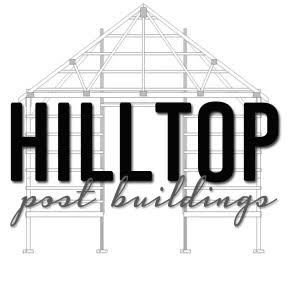Climate Considerations for Pole Barns
Table of Contents
The Significance of Climate in Pole Barn Design
So, how does it work to design your pole barn to withstand harsh weather?
Good question.
Before breaking ground, it is crucial to understand how climate affects the longevity and functionality of your pole barn. Changes in weather compress, stretch, freeze, and heat your building, having a profound impact on it.
Think about the harsh winters and humid summers we experience here in Central Ohio. That snow in the winter puts a lot of weight on your roof, and high winds can lead to damage if your structure isn’t built to withstand those forces. Plus, if you haven’t considered insulation, those hot summers can make it unbearable to be inside your barn without a good cooling system. In addition, rain and moisture can lead to damage if your pole barn isn’t properly protected.
For pole barns, often used as critical storage spaces, failing to account for climate could compromise their purpose. Designing a pole barn to withstand different weather conditions is smart and necessary for maintaining structural integrity and energy efficiency.
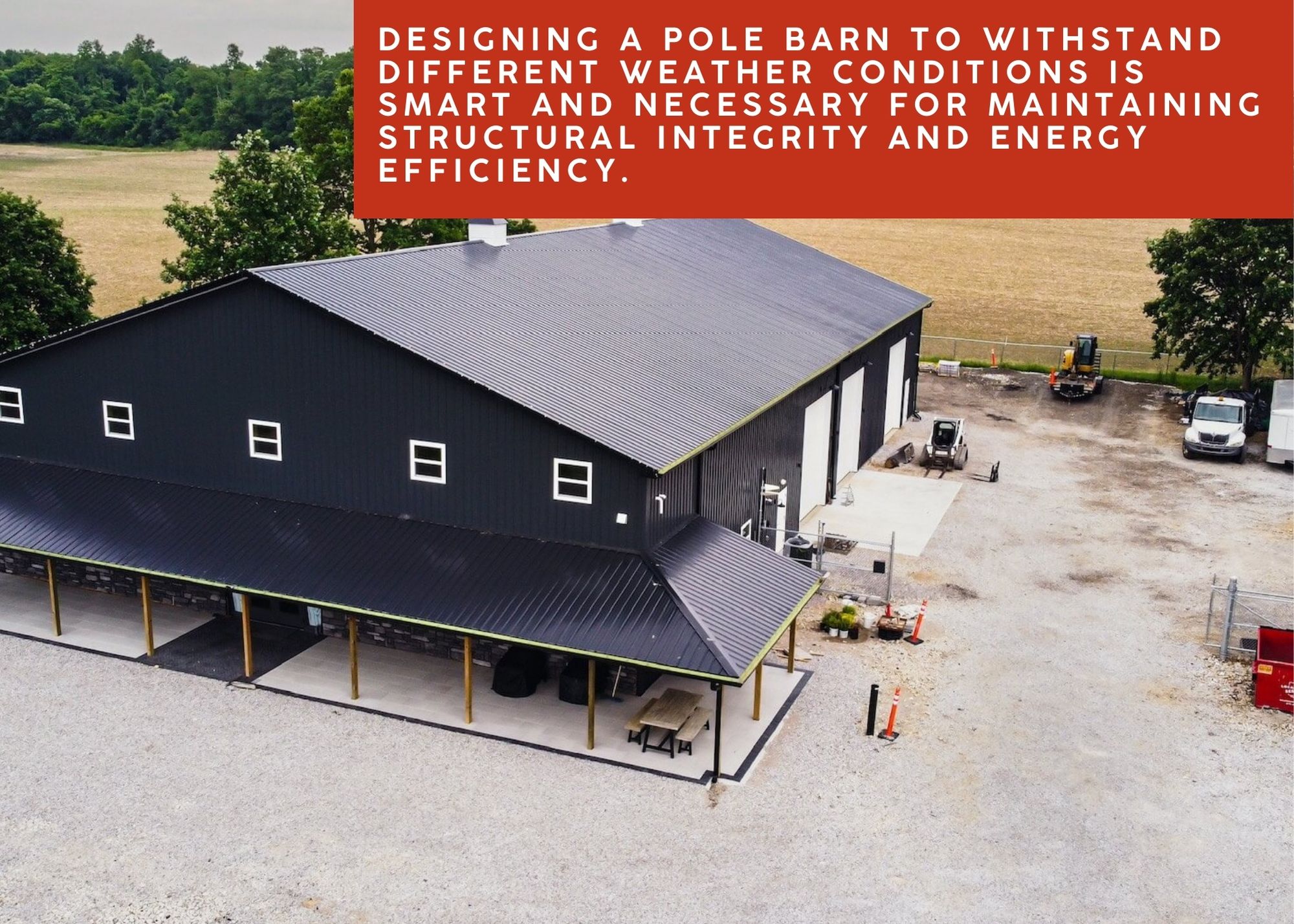
Thankfully, at Hilltop Post Buildings, we are ready to share our expertise and ensure your pole barn stands up to the elements.
To understand this better, let’s break down how climate affects your pole buildings.
Cold Climates: Structural Resilience and Warmth
Think about it: biting winters take a toll on any building, especially one designed incorrectly. In cold climates, there are specific strategies to consider:
- Building Orientation: Align your build to maximize natural light and solar heat gain. If you position your barn to face south, you’ll get more sunshine during the winter, helping to heat the interior.
- Structural Reinforcement: Make sure your walls and roof are strong enough to withstand heavy snow loads. We can also design your pole barn with a steeper roof pitch to help snow slide off easily.
- Insulation: It’s also important to make sure your pole barn has adequate insulation, which will keep your barn warm and comfortable. Insulate every inch—from walls to roofing—to maintain warmth and avoid heat loss. For more details about insulation, see our blog on Pole Barn Insulation: Mastering the Climate in Your Building.
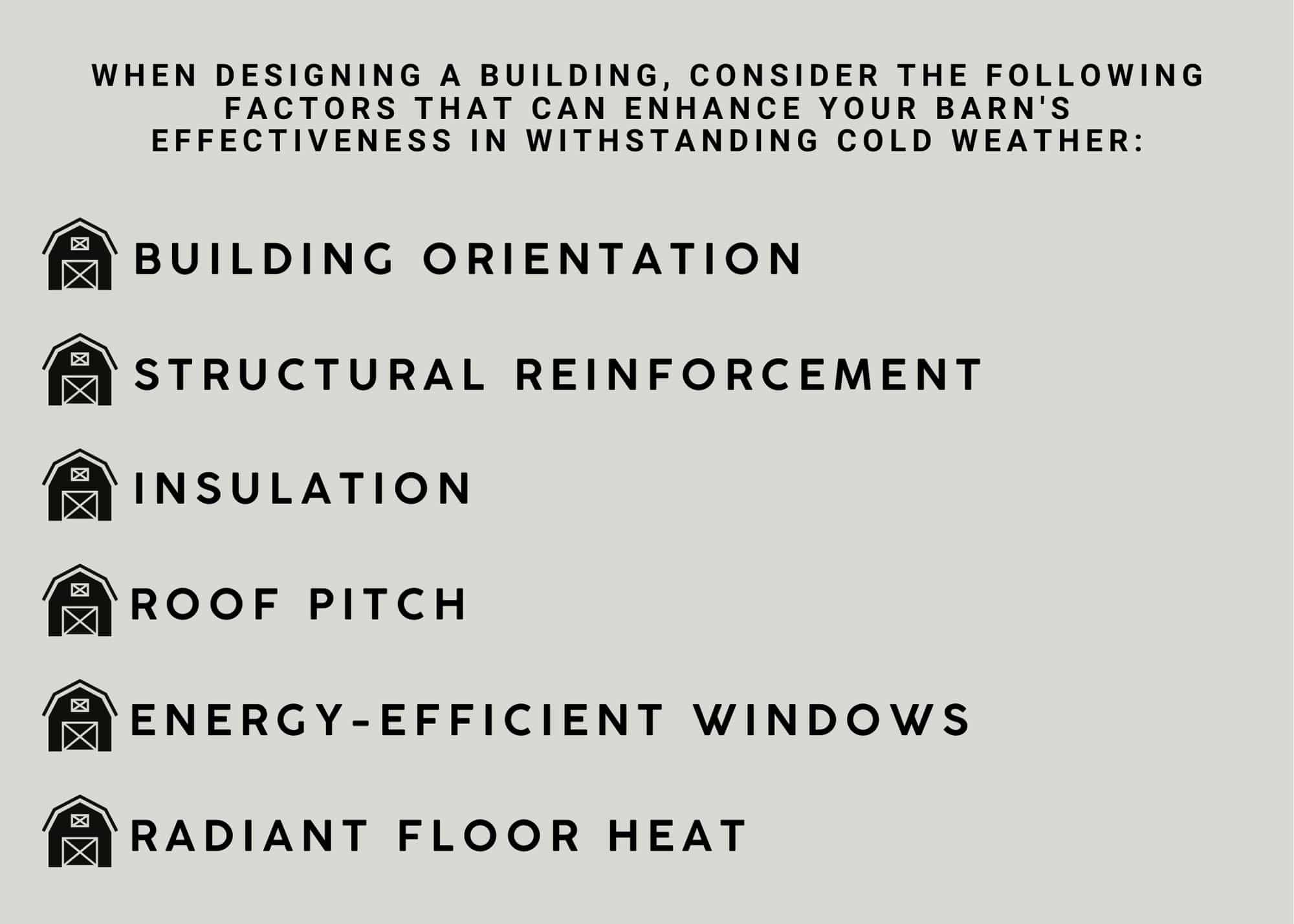
- Roof Pitch: A steeper roof pitch helps snow slide off naturally, reducing the risk of buildup and potential damage. This minimizes the need for manual snow removal and prevents heavy snow buildup from causing leaks or structural issues.
- Energy-efficient Windows: These improve energy efficiency and lower utility bills to help reduce heating expenses. They are designed to minimize heat transfer, keeping your pole barn warm in winter and cool in summer.
- Radiant Floor Heat: This is a great way to provide even heat throughout the entire barn. Radiant floor heat maintains consistent temperatures and prevents cold spots that can lead to discomfort or health issues.
All these design considerations are pivotal not just for comfort but for your building’s health and longevity. A well-thought-out design minimizes long-term maintenance costs and elevates energy efficiency.
But that’s not all you need to consider when building a pole barn.
Hot Climates: Cool Comfort in Design
Now, let’s move on to building in hotter climates. Sweltering summers can make any enclosed space feel stifling. Therefore, the design of your pole barn for hot climates centers around the following:
- Ventilation and Cooling Systems: Building a pole barn with plenty of windows and vents helps create a more comfortable interior environment. Consider installing a whole-house fan or a swamp cooler. These systems are designed to circulate air and draw in cooler air from outside.
- Heat Resistant Materials: Don’t forget to choose heat-resistant materials, such as metal roofing or siding, which reflect heat away from the building. Use reflective coatings on your roof and walls to reduce solar heat gain.
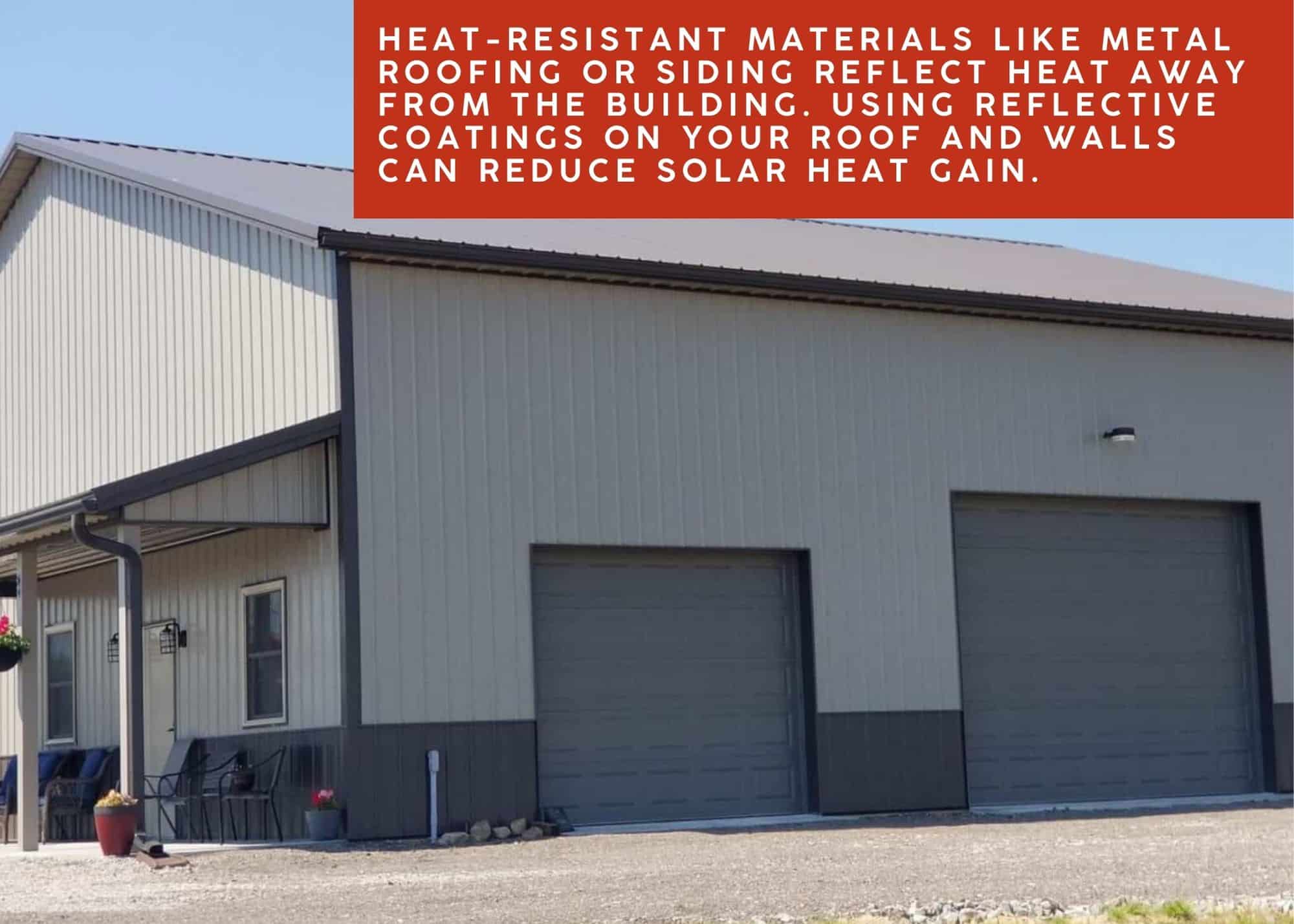
- Sunlight Management: Implement overhangs and shades to minimize direct sunlight exposure inside the barn. Trees provide shade and help to reduce the overall temperature of your property.
With these features, you can maintain a usable, energy-efficient pole structure, allowing fresh airflow rather than trapping hot, stuffy air.
Wet Climates: Guard Against Mold and Dampness
High humidity and rainfall affect immediate usability and can lead to problems with leaks, mold, and mildew. A good drainage system is essential to prevent water from pooling around your barn. Be sure to use materials resistant to moisture damage. We source premium materials so our structures withstand any weather conditions.
To ensure your pole barn lasts as long as possible, follow these tips:
- Inspect your roof regularly: Look for any signs of damage or leaks, such as missing shingles, loose metal, or water stains on the ceiling. You can prevent costly repairs and protect from water damage by addressing any issues promptly.
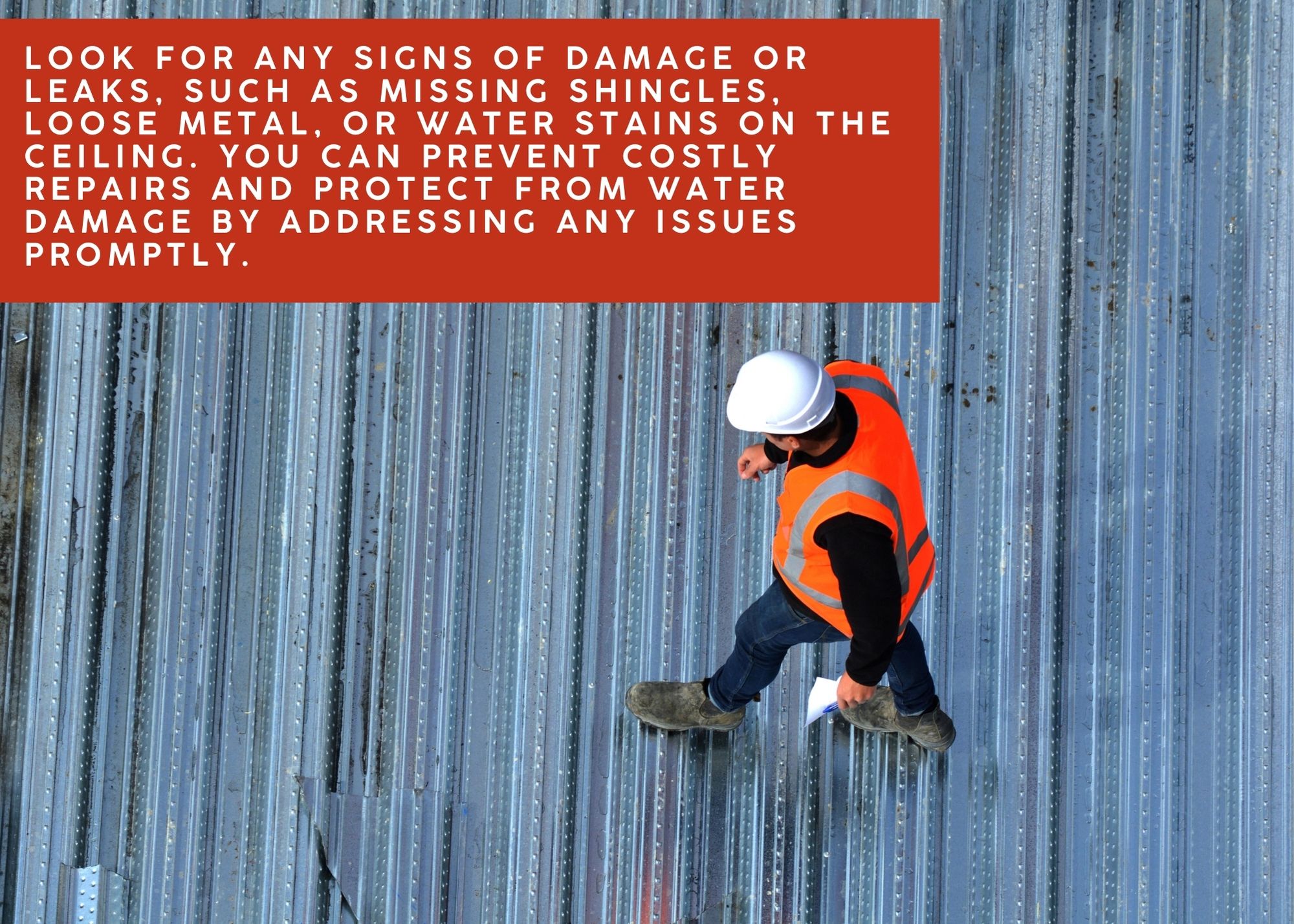
- Keep gutters clean: This prevents water from overflowing and damaging your barn. Regularly remove leaves, debris, and ice dams to ensure proper water drainage and protect your building from potential water damage.
- Ventilate your barn: Proper ventilation helps reduce moisture buildup, which can lead to mold, mildew, and structural damage. Install ventilation systems or open vents to allow air circulation and maintain a healthy environment.
- Drainage Systems: Ensure water runoff is directed away from the barn to prevent flooding or structural weakening. Install gutters, downspouts, and drainage channels to divert rainwater and melting snow. This will safeguard the integrity of your building and protect against water damage.
These elements can prevent water damage and create a healthier, more sustainable space year-round.
Need more guidance?
Our post about common mistakes with pole barns is a perfect starting point to avoid having your building turn into a nightmare.
Windy Climates: Withstanding Gusts and Gales
As if that’s not enough to worry about, strong winds can also be very damaging.
Wind resilience is about preparing for the worst. Here are pointers to ensure atmospheric stability:
- Stronger Anchors: Reinforce your structure with deeper, more robust anchoring to withstand strong gusts. Using high-quality anchors and following proper installation guidelines significantly improves the structural integrity of your building and protects it from severe weather.
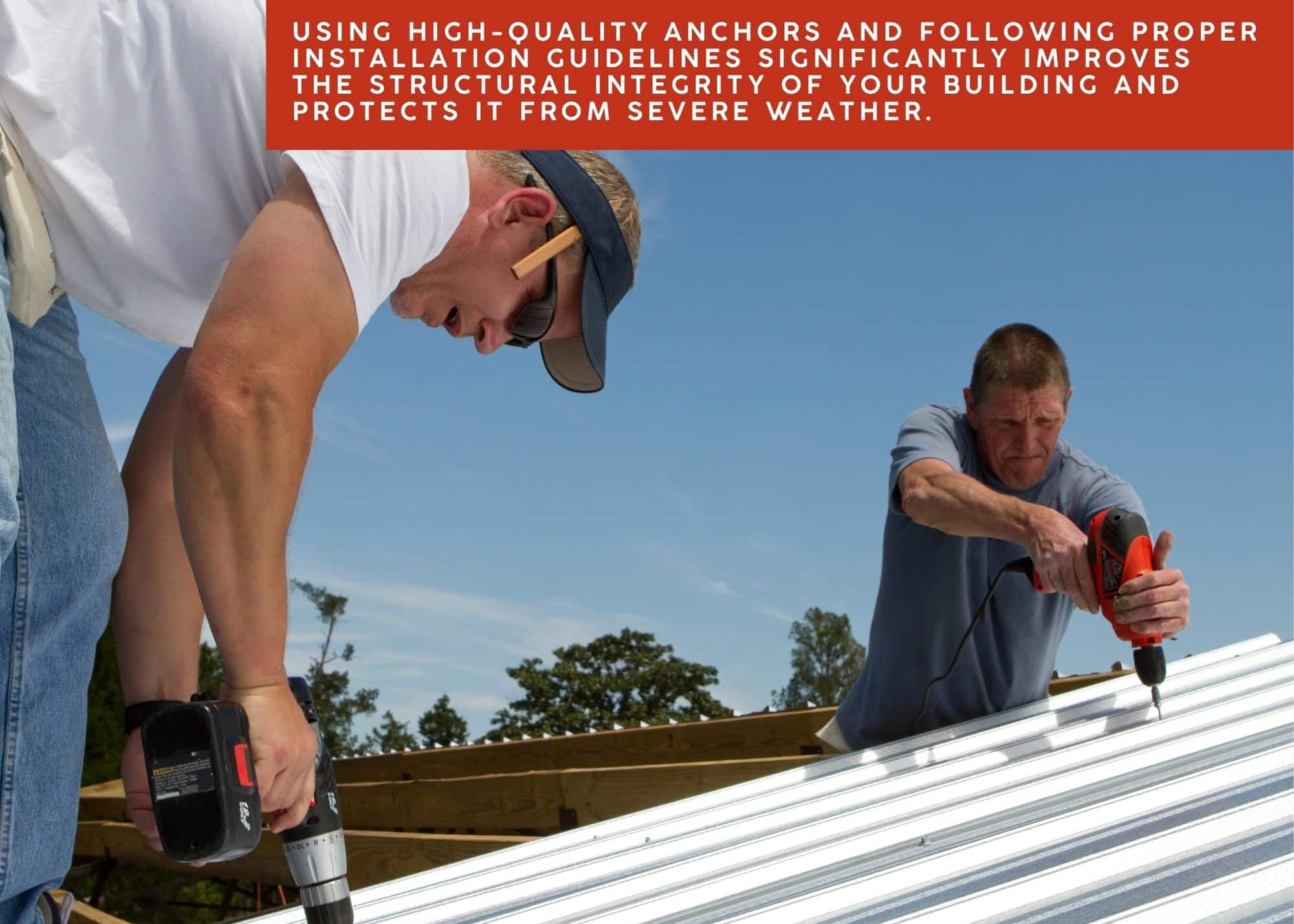
- Windbreakers: Consider natural or artificial windbreakers, such as trees or fences, adjacent to the barn to help protect it from the wind. Windbreaks reduce wind speed and create a more sheltered environment, helping to minimize wind damage.
- Aerodynamic Design: An aerodynamic design helps reduce wind resistance. This means using materials that are less likely to be caught by the wind, such as smooth metal roofing.
These methods reinforce the structural integrity against wind pressures for safety and durability.
Universal Design Elements
Some design tactics apply universally, regardless of climate concerns:
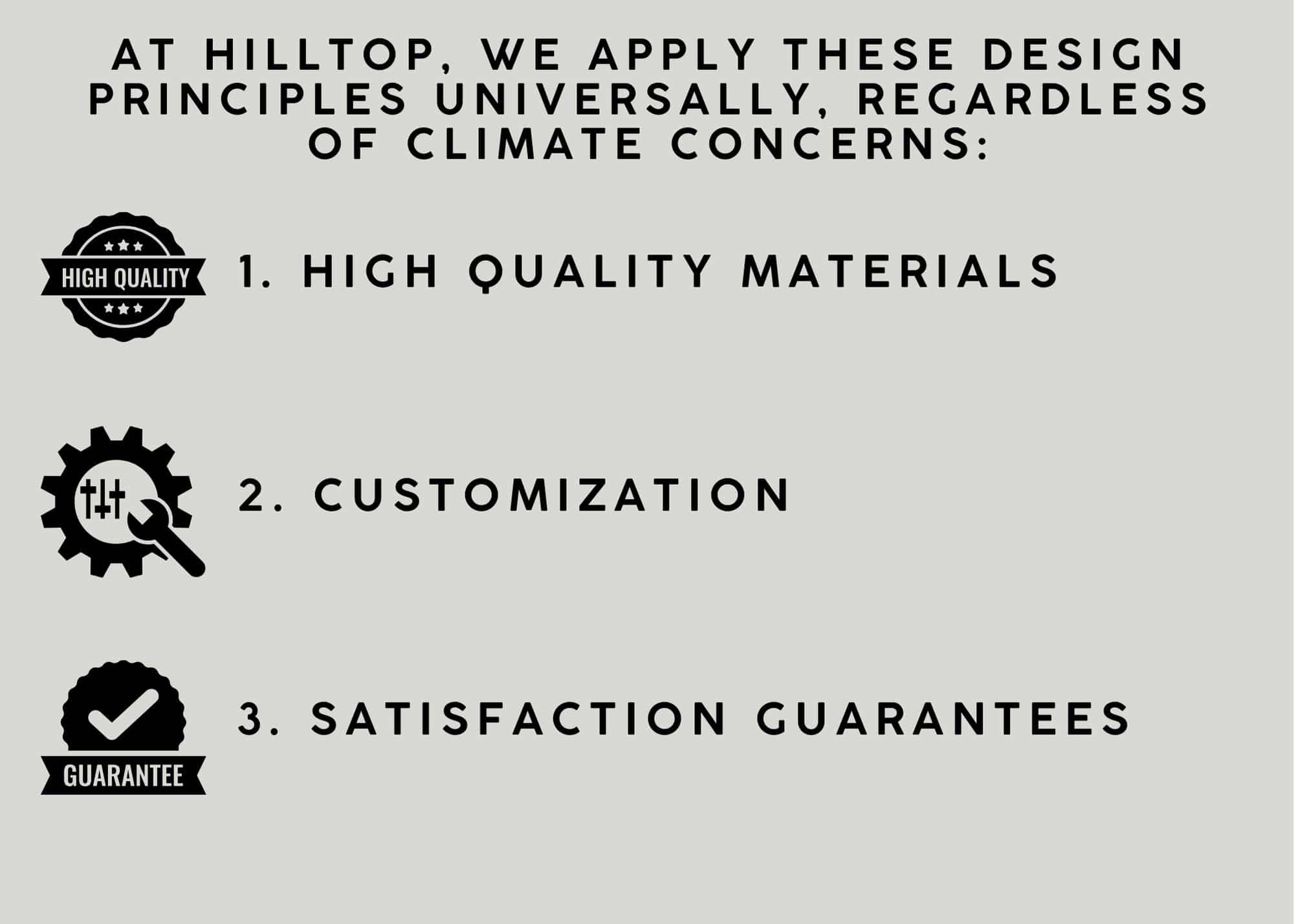
- High-Quality Materials: At Hilltop, integrity is foundational to our company ethic, ensuring that each material choice meets exquisite durability standards. We use premium materials designed to withstand the test of time, providing you with a structure that is beautiful and built to last.
- Customization: Tailor every aspect, from floor to ceiling, for versatile climate resilience. Our team of experts will work closely with you to design a structure perfectly suited to your needs and local climate conditions to ensure performance and longevity.
- Satisfaction Guarantees: Our commitment to your satisfaction is unwavering. We use only the best construction practices and highest-quality materials, so you will be thrilled with your project from start to finish.
Bringing It All Together with Hilltop Post Buildings
Whether rain or shine, snow or wind, your pole barn’s resilience against the elements is paramount. If you are contemplating your next pole barn project, weaving in these design elements is essential. Your pole barn should echo the same thoughtfulness put into your treasured vehicles or equipment inside.
Not sure if a pole barn is the right fit? Check out our detailed exploration in Why a Pole Barn Is Right for You: FAQs Answered to help you make an informed decision! Our commitment to premium materials and integrity paves the way for custom structures that are practical without compromising style or durability.
The choice to partner with Hilltop Post Buildings guarantees an approach rooted in satisfaction. Your unique climate solutions lie with us, so let’s build your customized pole barn today.
Are you ready to start your project? Reach out today, and let’s build something exceptional together.
